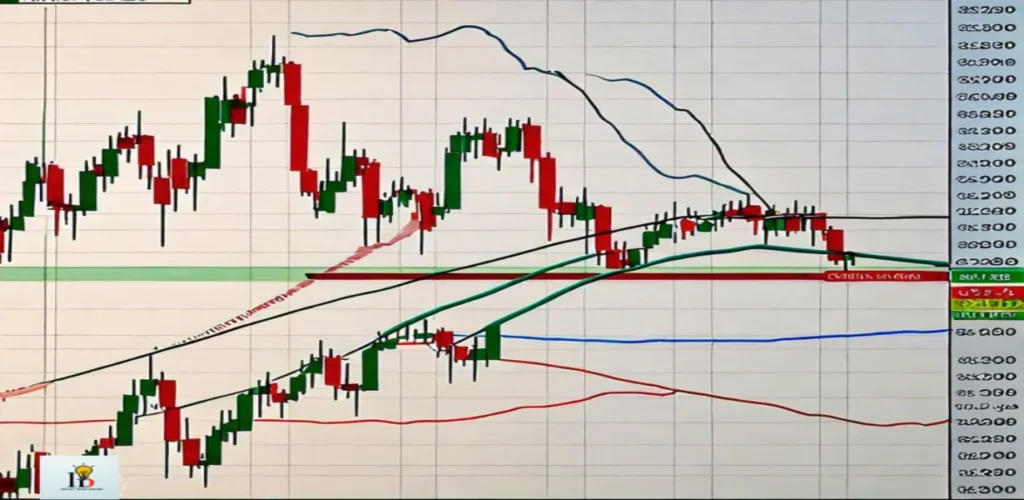Understanding stock market trends might appear like a difficult undertaking, but you can begin to understand these patterns and make wise investing selections if you have the correct tools and methods. We’ll clearly and simply explain out the fundamentals of stock market trend identification in this article.
Stock Market Trends: What Are They?
Describe Stock Market Trends
Stock market trends relate to the overall path that stock prices are taking during a certain time frame. These tendencies might move sideways (ranging markets), upward (bull markets), or downward (bear markets). Recognizing these patterns enables investors to make more informed choices about the purchase and sale of equities.
Why Stock Market Trends Matter
Trends are important because they may direct your investing plan and offer you insight into the general attitude of the market. You can potentially improve your returns on investments by matching market movements with your investments by knowing the trend’s intensity and direction.
Different Stock Market Trend Types
Rising Patterns
A bull market, which is characterized by steadily rising stock values, is another name for an upward trend. Strong economic conditions, profitable business operations, or investor confidence may be to blame for this.
Reverse Trends
A bear market, or negative trend, is characterized by continuously declining stock values. Economic downturns, subpar business performance, or general market dips might all cause this.
Inverse Trends
Stock prices that move in a horizontal range without substantially increasing or decreasing are said to be in a sideways trend. It might be more difficult to make money on this kind of trend, which signifies market indecisiveness.
Methods and Resources for Stock Market Trends

Shifting Averages
Moving averages: What Are They?
One of the most popular methods for spotting trends is the use of moving averages. They assist to emphasize the trend’s direction by smoothing price data across a certain time frame.
Average Moving Simple (SMA)
The average price of a stock is determined by the Simple Moving Average (SMA) over a predetermined period of time, such as 50 or 200 days. A price below the SMA may point to a downward trend, while a price above the SMA may point to an upward trend.
Moving Average Exponentially (EMA)
Because it places greater weight on recent prices, the Exponential Moving Average (EMA) responds more quickly to fresh data. The 12-day and 26-day EMAs are frequently used by traders to spot short-term trends.
Lines of Stock Market Trends
Trend Lines: What Are They?
On a stock chart, trend lines are drawn straight lines that link notable highs and lows. They aid in illuminating a trend’s intensity and direction.
Creating Trend Lines
Join the stock price’s lows to create an upward trend line. Join the highs to create a trend line that is downward. The trend is probably going to continue if the price continuously remains above the upward trend line or below the downward trend line.
Technical Measures
Index of Relative Strength (RSI)
The pace and variation of price fluctuations are gauged by the Relative Strength Index (RSI). It helps determine if a situation is overbought or oversold and has a range of 0 to 100. A stock may be overbought and destined for a drop if its RSI is above 70, while it may be oversold and may increase if its RSI is below 30.
Divergence of the Moving Average Convergence (MACD)
The connection between two moving averages of a stock’s price is displayed by the momentum indicator known as the MACD. A bullish signal may be indicated when the MACD line crosses above the signal line; a negative signal may result from a cross below the line.
Analysis of Volume

Volume: What Is It?
Volume is the total number of shares that are exchanged in a certain time frame. It can shed light on how strong a trend is. A strong trend is generally confirmed by high volume, whereas a weak or erratic trend may be suggested by low volume.
Examining Volume
To better grasp the trend, compare price fluctuations with volume. For instance, a rising stock and increased volume may indicate that the uptrend is stronger. On the other hand, a significant downtrend may be indicated if a stock is down with a lot of volume.
Analyzing Stock Market Trends
Events and News
Events and news may have a big influence on trends and stock prices. Keep abreast of corporate statements, economic statistics, and financial news to be aware of how these things might affect market movements.
Financial Metrics
Economic indicators that provide light on the general state of the economy include GDP growth, unemployment rates, and inflation. These signs may be used to anticipate future market patterns.
Combining Everything
Creating a Strategy for Trend-Finding
Use a combination of tools and approaches to uncover and evaluate stock market trends in an efficient manner. Utilize trend lines for exact entry and exit positions, moving averages for a more comprehensive picture of the trend, and technical indicators for extra confirmation.
Frequent Evaluation and Modification
Since trends may shift quickly, it’s critical to routinely watch the market. To keep in step with market movements, modify your plan in light of the most recent facts and trends.
Conclusion
Finding stock market trends include applying instruments such as trend lines and moving averages, assessing volume and mood, and comprehending the fundamentals of market movement. You will be able to make better financial judgments if you combine these strategies with ongoing market knowledge.
Recognizing and analyzing stock market patterns is an important ability that may help you confidently navigate the market’s intricacies, regardless of your level of experience with investing

There are additional articles to read.
There are some more articles based on different topics regarding family members and other home organizing issues; if you want to read them, then visit actual home guide, and for more information about invest ideas you can visit invest ideas.



